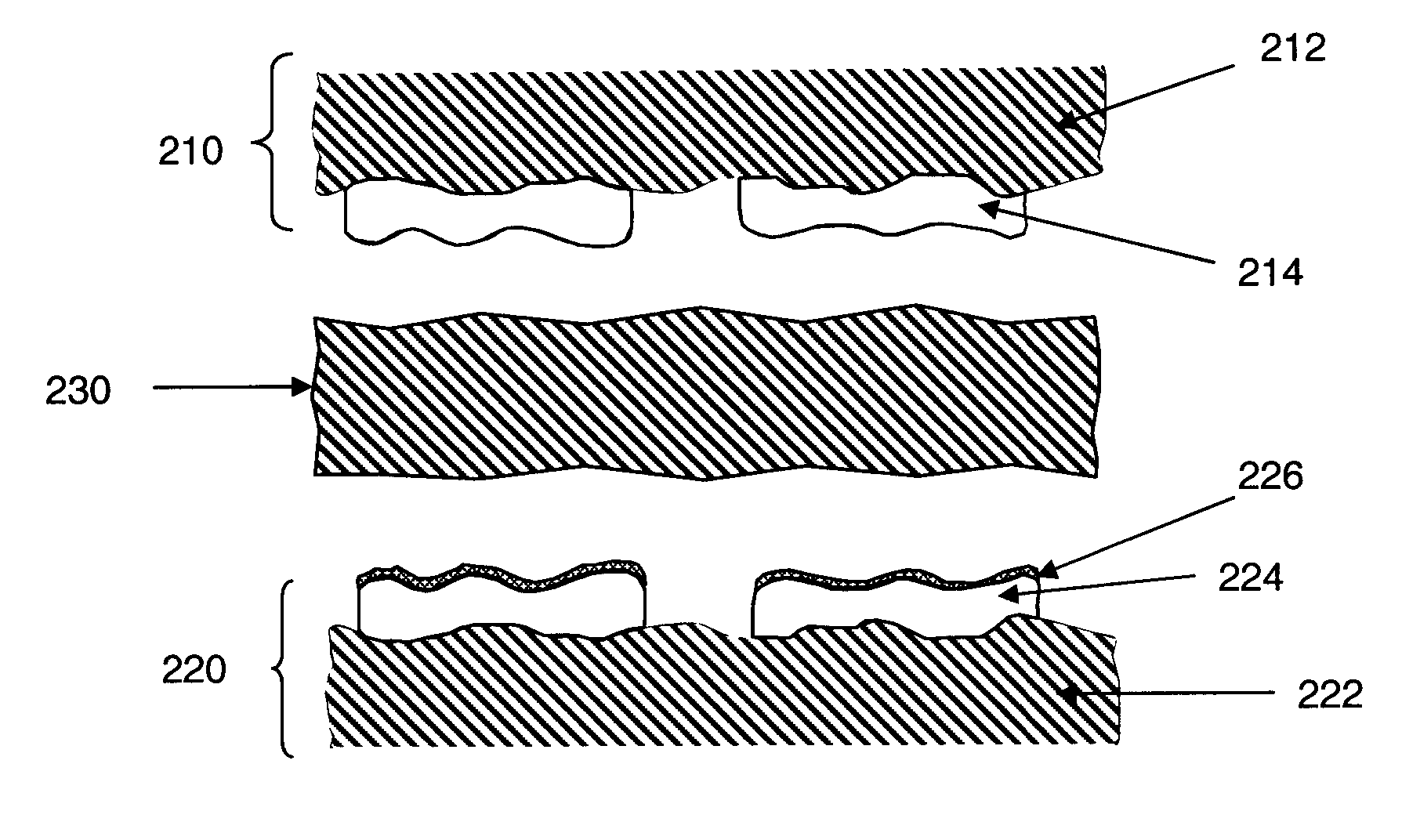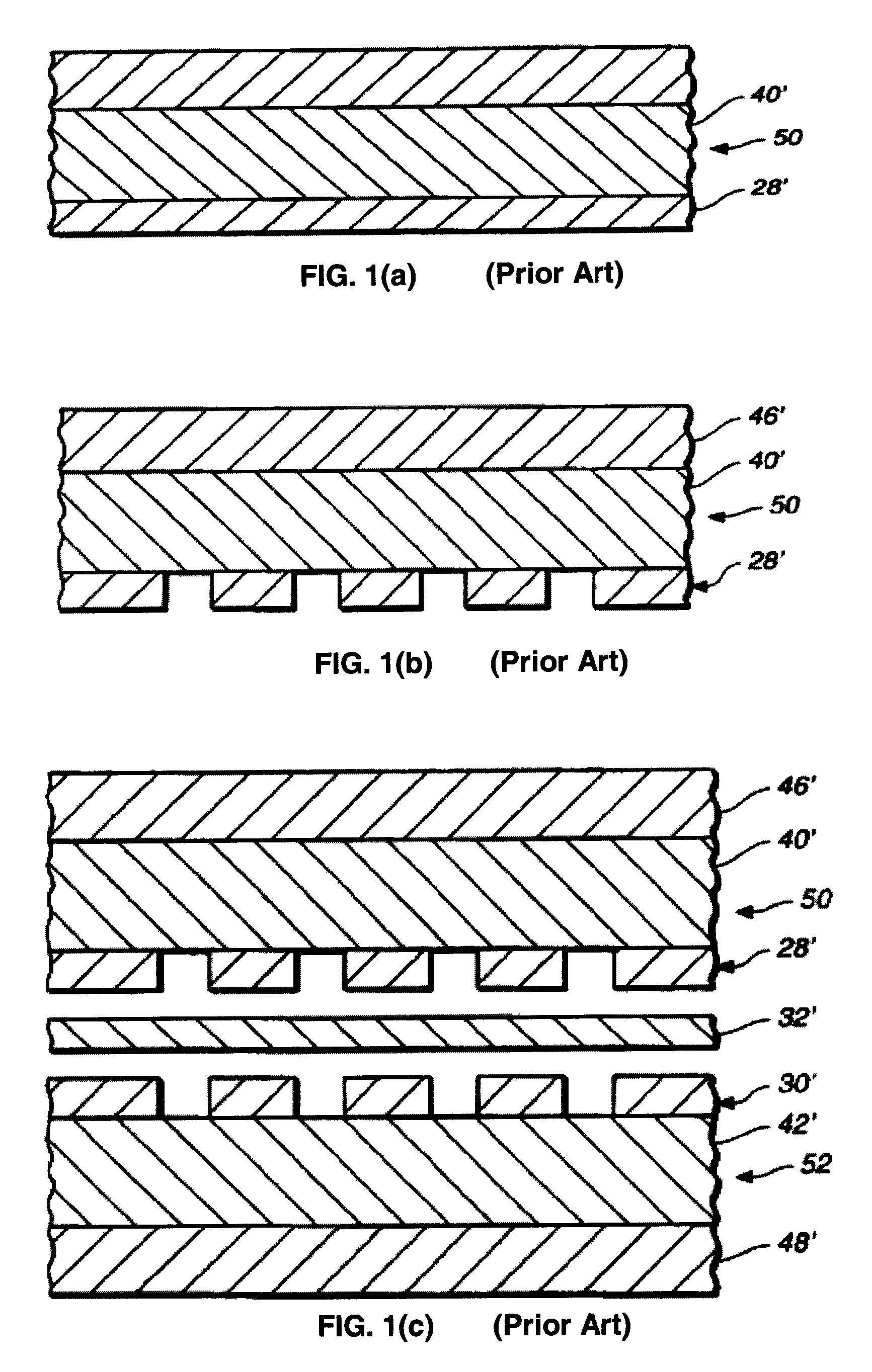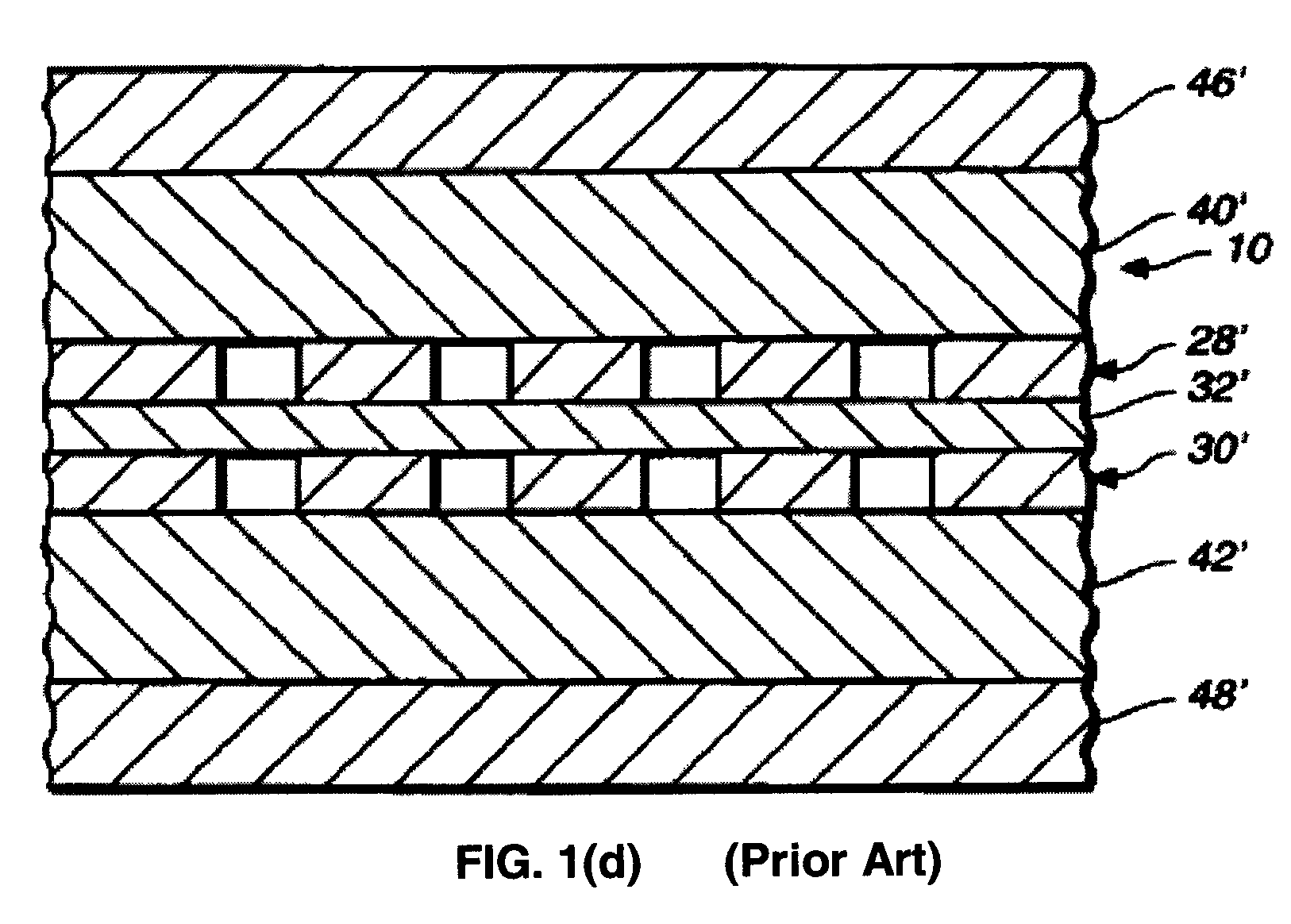Capacitor devices
a technology of capacitors and devices, applied in the field of capacitors, can solve the problems of reducing the thickness of the dielectric layer, presenting difficulties, and limiting the selection of dielectric materials
- Summary
- Abstract
- Description
- Claims
- Application Information
AI Technical Summary
Benefits of technology
Problems solved by technology
Method used
Image
Examples
Embodiment Construction
[0032]U.S. Pat. No. 5,800,575 describes one method of fabricating a metal-insulator-metal (MIM) capacitor. Referring to FIG. 1(a), the fabrication process may start from forming an initial lamination product 50 which includes the fully cured dielectric sheet 40′ with conductive foils 28′ and 46′ laminated or bonded on opposite sides of the dielectric sheet 40′. Thereafter, the conductive foil 28′ is etched as indicated in FIG. 1 (b). Referring to FIG. 1(c), another lamination product 52 is formed in a similar manner as the lamination product 50. The lamination product 52 includes the other dielectric layer 42′ and the conductive foils 30′ and 48′. An uncured dielectric sheet 32′ is then arranged between the lamination products 50 and 52 so that it is adjacent to both the conductive foils 28′ and 30′. After a conventional lamination to convert the uncured dielectric sheet 32′ to a fully cured condition, the finished capacitive PCB 10′ is formed as shown in FIG. 1(d). The thickness of...
PUM
| Property | Measurement | Unit |
|---|---|---|
| thickness | aaaaa | aaaaa |
| thickness | aaaaa | aaaaa |
| thickness | aaaaa | aaaaa |
Abstract
Description
Claims
Application Information
 Login to View More
Login to View More - R&D
- Intellectual Property
- Life Sciences
- Materials
- Tech Scout
- Unparalleled Data Quality
- Higher Quality Content
- 60% Fewer Hallucinations
Browse by: Latest US Patents, China's latest patents, Technical Efficacy Thesaurus, Application Domain, Technology Topic, Popular Technical Reports.
© 2025 PatSnap. All rights reserved.Legal|Privacy policy|Modern Slavery Act Transparency Statement|Sitemap|About US| Contact US: help@patsnap.com



